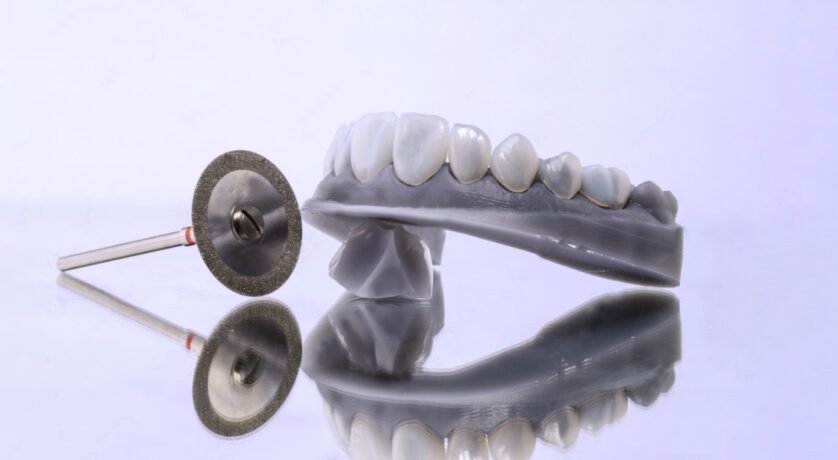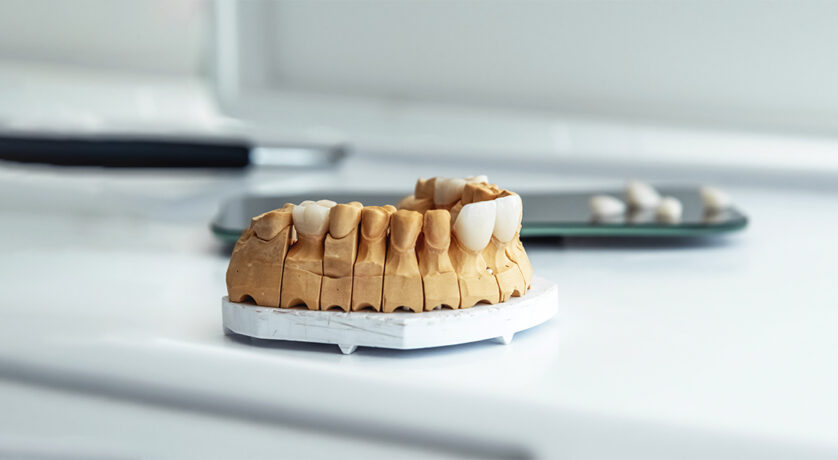Author: ThDentSpa_aDmEeN
Why Are Dental Fillings So Important?
June 21, 2022
What Are Dental Fillings
Dental fillings are treatments meant for restoring the strength, structure, and functionality of a damaged tooth. Your dentist will likely recommend a dental filling if your tooth is damaged by cavities.
Types of Dental Fillings
Gold Fillings
Gold fillings are fillings made entirely of gold. They are durable since they can last for up to 15 years or longer, depending on how they are used and cared for.
In most cases, your dentist will recommend dental fillings if your back-ended teeth need restoring. This is because gold fillings are strong enough to withstand the pressure molars are usually subjected to when chewing food.
It’s important to note that we cannot place gold fillings next to silver amalgams since they can interact and come in contact with saliva, causing a sharp pain known as galvanic shock.
Although there are many advantages to having gold fillings, some patients don’t find them attractive because they don’t look natural. In addition, gold fillings take more than one dental visit to be installed and cost more than other filling materials.
Silver Fillings (Amalgams)
Silver fillings are not made entirely of silver but rather contain a mixture of silver, tin, zinc, mercury, and copper metal. They are very strong and durable and thus will last for more than 15 years with good aftercare. A Bryn Mawr dentist will recommend amalgams to patients with damaged molars because of their strength and unattractive appearance.
Despite its poor aesthetics, silver fillings are a good option for teeth restoration. Patients can easily get amalgams since they are relatively cheaper than gold fillings and offer the same benefits. However, it would be best to inform your dentist of any allergic reactions you have since the mercury found inside amalgams may trigger them.
Composite Resin Fillings
Composite resin is a natural-looking material that can be painted to match the shade of your natural teeth. Its resemblance to natural teeth makes it a suitable filling material for patients looking to restore their front teeth. In addition, a composite filling can provide additional structural support to a damaged tooth by chemically bonding to the tooth’s structure.
The main disadvantage of composite fillings is that they are not as durable as other filling materials and not suitable for chewing. They also tend to wear out sooner and will last for about 5-7 years before needing to be replaced.
Porcelain Fillings (Ceramics)
Dental fillings made entirely from porcelain are more durable and resistant to staining than composite resin. Ceramic fillings are long-lasting and will serve you for up to 15 years with good aftercare. The downside of porcelain fillings is that they are expensive and can cost as much as gold fillings.
Before the Procedure
Your cosmetic dentist in Bryn Mawr will first have to examine your damaged tooth to determine if it’s suitable for a dental filling.
Using a small mirror, your dentist will look for any abnormalities inside your tooth. This can be a crack, cavity, or even discoloration.
When done, we will take an x-ray of your teeth to ensure there are no structural damages that went unnoticed during the inspection.
If we find something wrong during the checkup, we’ll recommend a suitable treatment for your dental imperfections.
Why Dental Fillings Are Important
Prevent Damage Caused by Decay
The chances of losing a tooth are higher among patients with tooth cavities. If you ignore a dental problem during its early stages, it can spread and destroy the structure and enamel of your teeth. By getting tooth fillings in Philadelphia, PA, immediately you start noticing dental carries, you can prevent dental loss caused by decay.
Improve Your Smile
The best thing about dental fillings is that it has many filling materials to choose from. If the sole purpose of undergoing a tooth filling procedure is to improve the appearance of your teeth, we can recommend porcelain or resin fillings. Porcelain fillings are better since they are stronger and more durable than composite resin.
Relieve Dental Pain and Discomfort
When your tooth gets damaged, it can cause severe dental pain and discomfort. Furthermore, damage to the tooth structure may result in tooth sensitivity when taking hot or cold food and beverages. To save you from experiencing prolonged dental pain, we recommend a tooth-filling procedure. You can work, talk, drink and eat better after restoring your teeth.
Protect Your Teeth From Infection
An infection can occur if the bacteria inside your mouth enters the tooth pulp. Once your pulp is infected, your teeth can start to die and fall out on their own. Furthermore, the infection can spread to other parts of your body and cause severe diseases.
Conclusion
Dental fillings come in different varieties, each guaranteed to meet your dental needs. Since there are numerous benefits to getting a dental filling, we don’t see why you should delay treatment. So visit The Dental Spa Main Line today and enjoy the benefits of strong, healthy, and attractive teeth. We use state-of-the-art technology to offer comfortable and precise treatment to all our patients.
Top Benefits of Cosmetic Dental Bonding Treatment
June 1, 2022
What Is Dental Bonding
Dental bonding is a cosmetic procedure meant for correcting dental problems that involve applying a resin material painted to match the shade of your teeth.
During the operation, your dentist will first clean off any plaque or decay from your tooth.
Once they are done, they will apply resin material, bond it, and then shape it.
Your dentist in Philadelphia will use a curing light to harden the resin material.
Finally, we will make minor adjustments and polish the bonding material to make it smooth and shiny.
Types of Dental Bonding
Direct Composite Bonding
It is the most common type of dental bonding procedure that involves using a natural-looking composite resin. Your dentist will mold the resin, bond it to your teeth, and harden it using a UV light.
Adhesive Bonding
This procedure is best for fillings and crowns with no metallic material. Your dentist will use an etchant, adhesive, and curing light to attach the restoration material to your teeth.
Advantages of Dental Bonding
It Is Affordable
Most people fail to restore their teeth due to the high cost of some restoration methods. However, with dental bonding, you don’t have to worry about the procedure costing a lot of money.
The average cost of a dental bonding procedure is around $250 to $600 per tooth. Furthermore, dental insurance is likely to cover the cost of the procedure if it is done to fill a cavity.
The Procedure Is Fast
If you are too busy and don’t have a lot of time to commit to dental restoration, consider seeing a Philadelphia, PA, cosmetic dentist.
Our dentist in Philadelphia can perform and complete the entire bonding operation in one dental visit. A tooth takes about 30 to 60 minutes to restore, and you can go back to work as soon as we are done.
It Is Painless
A cosmetic bonding procedure is not painful. Due to this, the only thing that may necessitate the use of anesthesia is filling a tooth infected with cavities.
In addition, preparation of the tooth before dental bonding only requires a small part of the tooth enamel to be removed.
Improves Appearance of Teeth Improves Appearance of Teeth
We refer to dental bonding as a cosmetic procedure because it improves the appearance of a damaged tooth.
The bonding material makes your teeth more attractive by reducing the gap between your teeth and changing their size, length and shape. In addition, resin is natural-looking and therefore difficult for someone to notice once bonded to your natural teeth.
Protects Your Teeth From Damage
Your tooth can become damaged due to wear, cracking, and decay. Resin can be applied to a tooth infected with cavity and make it stronger and less damageable. In addition, cosmetic bonding can restore the functionality of your tooth and make it easier for you to chew.
How to Ensure Your Dental Bond Last for a Long Period
Although dental bonds can last for a long time even with minimal care. You will still be required to take care of them so that they maintain their shade and strength. Below are some tips to follow to ensure your bonds serve you well for an extended period:
Boding material can stain easily. Practice good oral hygiene by brushing and flossing your teeth regularly
See your dentist regularly for routine dental checkups
Reduce your intake of acidic beverages such as coffee and red wine
Quit smoking as it can stain your teeth and bonding material
Avoid using your dental bonds to bite your nails or chew on hard objects
Disadvantages of Dental Bonding
Dental bonding material is not very strong and will wear or break easily if frequently used for chewing hard food.
It is prone to staining; thus, patients may be required to change some of their habits which may cause the bonding material to stain.
Conclusion
If you want to restore your teeth cosmetically, consider cosmetic dental bonding. Due to its numerous benefits, dental bonding has managed to beat other cosmetic restoration options and established itself as one of the best alternative tooth restoration methods. Visit the Dental Spa- Philadelphia for the best cosmetic dentist in Philadelphia. Our combined experience of more than 100 years in dentistry enables us to provide you with the best dental services.
An In-Depth Review of Sedation Dentistry
May 21, 2022
What Is Sedation Dentistry?
Dental sedation is a procedure helpful to establish a calm and relaxed state by using sedatives. You receive sedatives like depressants, tranquilizers, anti-anxiety medications, nitrous oxide delivered in various ways. Earlier IV sedation with sedatives delivered via injections to the arm was predominant when sedating patients.
While IV sedation is safe and effective when administered by a trained professional, sedation dentistry delivers a more conducive and relaxing experience. Currently, you have alternatives to the traditional methods of inhalation and intravenous sedation, offering a no-needle approach that you might find appealing.
Oral dental sedation is the most common technique used in the United States and Canada to quell dental phobia. The technique is comfortable, requiring no needles and the medications create a relaxing experience to ensure you don’t recollect the visit.
How Is Sedation Dentistry Used?
The dentist providing cosmetic dental care uses dental sedation to provide a relaxing and anxiety-free experience to enable you to receive the treatment you need. Dental sedation allows many people too scared to visit dentists to receive the dental care required by avoiding the common apprehension of dental phobia.
The dental organization for conscious sedation states nearly 30 percent of the population avoid dental visits due to fear. The all too common dental phobia inhibits people from receiving routine dental care and compromises the health and functionality of their mouth and smile.
How Do You Feel When Receiving Treatment under Sedation Dentistry?
As a patient, you will likely feel that you slept through the treatment without realizing oral sedation dentistry maintains consciousness levels for your safety and cooperation. It would help if you understood sedation dentistry in Philadelphia doesn’t eliminate the use of anesthetic injections. Instead, sedation dentistry increases your pain threshold, and when the dentist injects local anesthesia in your mouth, you don’t feel the injection because you are comfortably sedated. Therefore you will likely not bother yourself about the sensation of the injection or even remember it.
What Are the Benefits of Sedation Dentistry?
One of the advantages of sedation dentistry is that you feel your dental procedure lasted for a few minutes when the dentist may have taken hours to perform. Therefore sedation dentistry makes complicated dental procedures like smile makeovers and extensive rebuilding procedures requiring multiple visits to dentists completed in fewer appointments.
If you are reluctant to change your smile’s appearance because of anxiousness about undergoing lengthy and complicated dental procedures, sedation dentistry can relax you during the treatment to help you achieve a smile you will proudly display.
Furthermore, sedation dentistry addresses the fears that keep you from going to your dentist frequently for routine visits. Therefore you are more likely to receive the recommended care by your dentist without neglecting your oral health or allowing oral health issues to accumulate to the point where extensive dental treatments become necessary.
Sedation Dentistry Isn’t Sleep Dentistry
Sedation dentistry is often dubbed by the misleading term sleep dentistry. In reality, you are not asleep during your treatments. However, the effects of the medications merely make you feel sleepy. Sedation dentistry enables the professional to keep you awake throughout your procedure while you are relaxed and likely not to remember anything about your treatment. Therefore using general anesthesia is not similar to sedation dentistry.
Modalities of Sedation Dentistry
The sedatives used for sedation dentistry vary in strength. Your dentist selects the dental sedation option best suited for your specific situation, depending on the duration of your procedure and your anxiety levels. Although the dentist is the ultimate determinant of what sedatives to use, you can request stronger medications if you suffer from severe dental anxiety.
You might receive sedation levels from mild, moderate, or deep according to the procedure you are undergoing. Therefore you must have a friend or family member driving you to and from the dental facility because the medications delivered make you incapable of operating vehicles and machinery.
If you fear dentists because of your dental phobia, The Dental Spa Main Line can provide dental sedation to help you overcome your anxiousness. Kindly contact the dental facility to receive the treatments you need to improve your smile.
Porcelain Veneers — Procedure & Recovery
February 1, 2022
Dental veneers can solve most or all your cosmetic dental issues by correcting problems with worn enamel, natural wear and tear, genetics, uneven teeth, and discoloration from infections or injuries. Therefore if you think your teeth impact your smile, you must schedule a consultation with cosmetic 19102 to determine whether you are suitable for the porcelain veneer process.
What Happens During Your Initial Consultation?
During your initial consultation, the cosmetic dentist in Philadelphia determines whether you are a candidate for porcelain veneers. They evaluate your oral health and discuss all possible treatment options to improve the appearance of your teeth.
If you qualify for porcelain veneers, tooth preparation is essential, and the enamel and dentin removal is irreversible. Therefore the dentist discusses any alternatives to provide the same results with minimal or no removal of tooth structure. However, if you intend to have porcelain veneers over your teeth, the next step involves a comprehensive review of the treatment details, including teeth preparation for your specific veneer procedure to make them appear and fit correctly.
You will actively participate in the smile design process during your consultation. You can communicate your choices for the height, form, width, and color of the veneers and the change in how your smile appears and ensure the treatment meets your expectations.
What to Expect from the Porcelain Veneer Procedure?
Porcelain veneers in Philadelphia, PA, complete the procedure in two visits spanning over six weeks. The visits are extended, requiring several hours of reevaluation and tooth preparation. The Philadelphia provider makes your visits comfortable by providing sedation and relaxation techniques to ensure you go through the veneer procedure without encountering any discomfort.
The dental veneer procedure has several steps. Firstly the dentist provides you local anesthesia during tooth preparation and placement of the veneer. The natural tooth is prepared by reshaping it with a small handheld tool to accommodate the surface. The enamel removal procedure is irreversible, making it a requirement for you to have porcelain veneers over your teeth even if you don’t want them later. After preparing your teeth, the dentist impressions them for the laboratory to customize your dental veneers. You receive temporary veneers over your teeth until the dental lab returns your customized surfaces to the dentist.
You must revisit the dentist after six weeks to have your permanent surfaces bonded to the teeth. During your second appointment, you again receive local anesthesia is the dentist removes your temporary veneers and checks the permanent covers for color and fit. All things being acceptable, your porcelain veneers are permanently bonded to your teeth using special dental cement. As you leave the dentist’s office, you can do so, smiling widely from ear to ear showing off all your front teeth.
Recovering from Getting Porcelain Veneers
Porcelain veneers are incredibly durable and last for many years before needing replacements. However, After-care is highly essential because chipped or fractured porcelain veneers are not repairable. Therefore the dentist advises you on the costs and the time required for replacing the damaged surface.
You must maintain excellent dental hygiene by brushing and flossing your teeth regularly and using non-abrasive toothpaste. Getting regular exams and cleanings is also a requirement you cannot overlook to maintain the health of your mouth and the longevity of your restorations. If you want to minimize the risk of damaging your veneers, you must avoid biting or chewing on complex objects like nut shells or bones and do not use your teeth for purposes other than chewing or biting. Porcelain veneers are stain-resistant, ensuring they will not discolor after getting them over your teeth. However, you must brush your teeth after having tea, coffee, or red wine to ensure you don’t discolor the veneers.
The recovery time from dental veneer placements is minimal, and you can begin using your teeth soon after the anesthesia wears off. However, it helps if you remember porcelain veneers can damage or break if you use your teeth for biting complex objects like carrots or try to open packages with them.
If you intend to have porcelain veneers over your teeth, The Dental Spa — Philadelphia provides them with proper instructions on how to care for them to maintain their longevity.
What Is Bad Breath? Diagnosis and Treatment
February 1, 2022
This article will discuss the origins of bad breath, diagnosis, and treatment. Would you please read to understand how to deal with bad breath if you or a family member is affected by this problem?
Essential Facts about Bad Breath
Approximately 1 to 4 people throughout the world are affected by bad breath. Bad oral hygiene is the most common reason for halitosis. Sulfur compounds are produced by bacteria from the food particles left in the mouth after breaking them down. You can reduce mouth odor by keeping your mouth hydrated, and the optimal remedy for halitosis is regular brushing, flossing, and hydration.
Bad Breath Explained
Lousy with is a familiar problem causing significant psychological stress. There are many causes for this condition, and treatments are also available to manage the situation appropriately. Bad breath can affect anyone, and estimates are known to confirm one in four people are affected by halitosis regularly.
The third most typical reason people seek dental care from a dentist in 19010 after tooth decay and gum disease is halitosis. In contrast, simple therapies and lifestyle modifications such as better dental hygiene and quitting smoking often removes the problem. However, if you have persistent bad breath seeking advice from dentists to identify underlying issues is advised.
Symptoms of Halitosis
Specific odors of bad breath can vary depending on what is causing the problem. It is best that you ask a relative or a friend to gauge your mouth odor because it is challenging for you to assess it yourself. If you don’t have anyone around you, use a simple trick like licking your wrist, leaving it to dry, and smelling it. If you find the smell on your wrist repulsive, it suggests you have halitosis.
Many people are concerned about halitosis even though they may not exhibit any symptoms. This condition is known as halitophobia and causes obsessive mouth cleansing behavior.
Diagnosing Halitosis from a Professional
If you visit the cosmetic dentist Bryn Mawr for teeth whitening remedies, they will likely smell your breath and read the odor on a six-point intensity scale. The back of your tongue may also be scrapped, and the scrapings are smelled because the back of your tongue is often a source of the odor.
Dentists use various sophisticated detectors to precisely rate foul odor before identifying the likely cause of the condition to offer bad breath treatment in Philadelphia, PA.
The detectors used by dentists include the following:
- Halimeter detecting low levels of sulfur.
- Gas chromatography measures three volatile sulfur compounds: hydrogen sulfide, dimethyl sulfide, and methyl mercaptan.
- BANA test to measure specific enzyme levels produced by the bacteria causing halitosis.
- Beta-galactosidase test because levels of this enzyme are co-related with halitosis.
Treatment for Bad Breath
Good oral hygiene is the optimal technique available to reduce bad breath. Good oral hygiene also ensures you avoid cavities and the likelihood of gum disease. You must schedule six-monthly visits to your dentist for checkups and cleanings without exceptions. Dentists recommend toothpaste with an antibacterial ingredient or an antibacterial mouthwash if bad breath affects you. If you have gum disease, the dentist may recommend a deep cleaning and eliminating bacteria in the pockets between your gums and teeth.
Home Remedies for Bad Breath
Simple lifestyle changes and home care can also help get rid of bad breath. If you wish to succeed with all remedies, you must brush your teeth at least twice a day, preferably after every meal. Flossing your teeth can reduce the buildup of food particles and plaque from between your teeth because brushing only cleans 60 percent of the surface of your teeth.
When brushing your teeth, do not neglect your tongue because bacteria, food, and dead cells build up on your tongue and is a common problem among smokers are people with xerostomia. A tongue scraper can help you achieve your goal of cleaning your tongue. In addition, keep yourself hydrated by drinking plenty of water or chewing sugar-free gum to stimulate saliva production. You must also change your diet and avoid and alcohol consumption.
If home care techniques fail and bad breath still haunts you, contact The Dental Spa Main Line for additional tests to rule out other conditions.
The Pros And Cons Of Lumineers
January 1, 2022
Apart from being a dental treatment for damaged teeth, lumineers are cosmetic. Due to their porcelain materials, they can fit in and blend with actual teeth color. Unlike other noticeable dental treatments for damaged teeth, people can hardly notice lumineers on the teeth. No matter how effective a treatment is, you might want to deliberate on the possible side effects and what it might cost you. In this article, we will consider the pros and cons of lumineers.
You can get lumineers for the following dental abnormalities:
- Largely spaced teeth
- Crooked teeth
- Broken or fractured teeth
- Severe teeth discoloration
- Irregularly shaped teeth
How Do Dentists Place Lumineers On The Teeth?
If you are interested in getting lumineers, you have to book a dental session with the dentist to create a treatment plan after examining your teeth. You can get lumineers in Philadelphia, PA, when you visit the best cosmetic dentist in Philly. Please book an appointment with them at the Dental Spa- Philadelphia today.
Note that, before getting lumineers placed on your teeth, your dentist would advise you to get treated first if you have teeth decay.
Once your teeth are confirmed to be healthy for lumineers, your dentist will proceed with the procedure.
Next, the dentist would take a picture of your teeth’ structure. The image would be taken to the lab, where your custom-made lumineers would be produced. Before the permanent lumineers are placed, your dentist would place temporary lumineers while your permanent lumineer is being made.
On your final dental visit, your new lumineers will be ready and placed on your teeth. During your last dental visit, your dentist would check if your lumineers need adjustments and provide you with aftercare tips to help you maintain your lumineers.
Pros Of Lumineers
- Lumineers can preserve your actual appearance. They are very good at enhancing your dental structure without affecting your appearance negatively. Although they are artificial, they are hardly noticeable.
- Lumineers are comfortable. Since they are thinner than regular veneers, you would hardly feel their presence on your teeth.
- Lumineers can boost your confidence. They are among the best smile makeovers that allow you to smile boldly without being conscious about your dental appearance.
- Your dentist can reverse the Lumineers procedure. If you are not satisfied with the treatment, they can easily take them off and recommend another dental treatment that suits you best.
- Lumineers don’t require much or any removal of your teeth parts before getting placed. They are conservative.
- Lumineers are durable and can last as long as regular veneers.
Cons Of Lumineers
- Lumineers are not regarded as a compulsory dental treatment since they are mainly used to beautify the teeth structure. In some cases, they might not be needed or necessary.
- They are more costly than regular veneers. Due to their cosmetic nature, most insurance companies don’t take care of the payments. The cost can be too much if you need multiple placements.
- Although lumineers are advantageous due to their tiny size, their small size can also be disadvantageous. That is because it might not cover the dental damage the way you want it. People who have very dark stains on their teeth might not benefit much from lumineers.
- Lumineers are not for everyone, especially those who grind their teeth constantly. The lumineers can get damaged if you habitually grind your teeth. You might need to get a nightguard to prevent the lumineers from getting chipped or damaged.
You can see our cosmetic dentist in 19102 if you need to get lumineers.
What Are the Differences between Veneers and Lumineers?
January 1, 2022
Dental grade porcelain helps make traditional veneers needing significant preparation of your teeth to get them ready for the placement. The facility mentioned above also provides an alternative veneer brand available with only some dentists and manufactured by the DenMat dental laboratory. The placement of Lumineers is faster, and the variety is thinner than traditional veneers, also being affordable. Unfortunately, choosing the suitable kind of surface for your teeth isn’t as straightforward as you think. This article reviews the differences between porcelain veneers and Lumineers, also known as no-prep veneers. In addition, we provide you with the information needed better to understand the pros and cons of both varieties.
Everything You Want to Know about Porcelain Veneers
Porcelain veneers are cosmetic surfaces for your natural teeth. Porcelain veneers help your teeth appear bright, white, and glossy. Unlike tooth enamel which is porous, porcelain is not. Therefore it is resistant to staining. However, some staining develops over the years on the edges of the veneer meets the tooth.
Porcelain veneers are suitable for cases where the teeth appear yellow, brown, or display signs of decay and staining challenging to cover up. There are also helpful to cover broken or chipped teeth, smaller than average teeth, and uneven teeth to make them invisible behind traditional veneers.
Applying porcelain veneers needs customization for your unique requirements. After a consultation, dentist 10910 grinds the tooth’s surface needing the veneer in preparation for the placement. Next, the shape of the teeth is thinned to accommodate the shells in the mouth. After the preparation, the dentist makes molds of your teeth and provides you with a temporary acrylic veneer to protect the prepared tooth. The mold is for the dental laboratory to custom creates your customized surfaces.
The dental laboratory needs approximately two to four weeks to prepare before sending it back to the dentist. Therefore, your first consultation may require several hours, depending on how many teeth need veneers on them. However, after the dentist receives the surfaces from the lab, they cement the shells to your prepared teeth with a unique bonding solution.
If you decide on traditional veneers, you agree to compromise your tooth enamel. Traditional veneers make it challenging to reach your gum line when cleaning your teeth. The placement may put you at higher risk of gum disease.
Traditional veneers last many years, approximately eight to ten years, and may last longer up to 20 years if cared for properly. Traditional porcelain veneers cost $ 950-$ 2500 per tooth, and if you are considering them on multiple teeth, you may receive a discount from the dentist treating you. However, dental insurance does not cover porcelain veneers, classifying them as a cosmetic treatment.
Lumineers Explained
If you are not in favor of the lengthy procedure of getting traditional veneers, you can contact the Bryn Mawr dentist for an alternative requiring less preparation and advanced dental work than the former. The dentist offers you Lumineers thinner and more transparent than traditional porcelain veneers. Lumineers are excellent if you have discolored teeth. Lumineers don’t require intensive preparation, similar to traditional veneers. Therefore they are often called no-prep veneers because they are made from ultra-thin laminate.
Lumineers in Philadelphia, PA, are provided to treat unusually shaped teeth and discolored teeth. Lumineers are thinner than porcelain veneers and have better transparency than porcelain. This reason prevents people with severely discolored teeth from infections from having them.
The thinner feature of Lumineers requires no grinding of the teeth before the application. Instead, your dentist has them customized from the manufacturers for your unique treatment needs.
If no-prep veneers make you comfortable, please hold yourself back because they still require two appointments with the dentist. The first appointment is to take a mold of your teeth for the DenMat laboratory to customize your Lumineers. You don’t have to endure temporary veneers over your teeth as no preparation is involved. You can revisit the dentist after the dental laboratory returns your Lumineers to get them bonded to your teeth.
Lumineers, unlike traditional veneers, are semipermanent, making them removable with minimal damage to your teeth after application. However, you may experience challenges cleaning your teeth around the gum line, similar to traditional veneers.
Lumineers have a lifespan of around 20 years, claims DenMat laboratory. Independent sources report Lumineers last for up to a decade before needing replacements. Lumineers cost between $ 800-$ 2000 per tooth, and similar to traditional veneers, you don’t receive coverage from dental insurance because they are considered an elective procedure.
Please consider carefully before deciding on Lumineers or veneers for your teeth. Many dentists do not offer Lumineers, and some may provide you with alternative no-prep veneers. In addition, if your smile makes you self-conscious, you can consider other options such as braces, teeth whitening, or aligners.
However, if you intend to change the appearance of your teeth with veneers, we suggest talking to the Bryn Mawr dentist because they can advise you on the optimal course of treatment for your mouth after considering the budget.
Dental Fillings: What Are They and Who Needs Them
December 1, 2021
If you neglect them now and then, you might have to deal with cavities shortly. In most cases, cavities will arise due to poor dental hygiene or other underlying conditions such as xerostomia (dry mouth).
However, our cosmetic dentist in 19010 can treat cavities using tooth fillings in Philadelphia, PA, with the current dental technology.
To most people, tooth cavities seem to be grotesque holes that will be excruciating and challenging to fix.
On the contrary, the tooth filling procedure is painless and is designed to alleviate pain.
Understanding Dental Fillings
One of the standard treatments that you’ll find in any dental office is dental fillings. Tooth fillings in Philadelphia, PA, are made from different materials. You can select the type you want depending on your preference.
Fillings are the go-to option when you are looking for a solution for cavities. They are used to repair broken or chipped teeth. Also, our dentist near you can use them to repair worn-out teeth that occur because of nail-biting or bruxism.
Do You Need Tooth Fillings?
Most people have been told from a tender age that cavities are bad for your teeth, and this is true. However, most people take this issue lightly. This is because teeth never get damaged overnight. It might take months or even several years before you notice that your teeth have a problem.
If the problem persists and you don’t get the tooth checked out, you might end up losing your teeth.
In any case, dental fillings can be what you need if you desire to:
- Repair broken teeth
- Treat a cavity
- Repair teeth that have been worn down
How Are Fillings Placed?
The tooth filling procedure is a painless affair. The procedure commences after our dentist has administered local anesthesia to numb the area. Then, the decayed part will be removed using a drill or laser.
Next, our dentist will clean the left space and prepare it to receive the tooth filling. Your pearly whites will be cleaned to remove any decayed matter and bacteria before a filling is placed.
If the decay has gone close to the root, our dentist will place a liner before inserting the filling. This is done to protect the root.
Then, the area will be filled using the material of your choice.
However, for tooth-colored fillings, the approach is slightly different. Our dentist will apply layers of the material until the tooth is filled. However, each layer of the material will be cured under a special light.
Once the tooth has been filled, it will be shaped and the surplus material removed. Lastly, the tooth-colored filling will be polished to ensure that it matches the sheen of the rest of your teeth.
Types of Dental Fillings
Various materials are used to create fillings, such as gold, porcelain, even silver. However, our cosmetic dentist in 19010 offers composite fillings.
These are tooth-colored fillings made from a mixture of quartz or glass filler in a resin medium.
Composite fillings are strong and are resistant to fracture in small to medium-sized restorations, which need to withstand moderate chewing force.
Also, they have excellent aesthetics since they are tooth-colored. Therefore, they will be indistinguishable from the rest of your teeth.
How Long Will the Fillings Last?
As mentioned before, composite fillings are strong and durable. However, they are not as sturdy as metal fillings. But this does not mean that they cannot serve you for some years.
Averagely, the composite fillings will last for at least five years. If you can care for them as you should, then you might extend their lifespan, and they can last for a decade or so.
The Bottom Line
Tooth cavities take time before you notice the real damage. However, when you notice that you have cavities, don’t assume the worst. Visit our dentist at The Dental Spa to get treatment for the cavities. Remember, proper oral care and avoiding chewing hard objects will ensure that the fillings last long.
Why Do You Need High-Quality Dental Crowns?
December 1, 2021
Metals or porcelain fused to metal help make crowns as suitable restorations for your back teeth the molars. However, the dentist near you does not provide crowns made from or containing metals. Instead, the dentist places all-porcelain or all-ceramic crowns as suitable replacements for the lost teeth in the aesthetic zone of your mouth.
Reasons for Placing Porcelain or Ceramic Crowns on Fixed Bridges
All-porcelain or all-ceramic crowns are suitable if you have metal allergies or sensitivities. The crowns do not inflame or irritate and damage the surrounding tissues. Best of all, these crowns are translucent when viewed using x-rays, enabling dentists to detect hidden infections or decay during routine dental exams.
Crowns are recommended to restore the appearance of unevenly shaped or severely discolored teeth. Crowns are also a standard restorative solution. If you have decayed or broken teeth that are not restorable with fillings, dental inlays & Onlays, the dentist recommends dental crowns to restore the natural functionality of your tooth and oral health. Crowns are also beneficial after root canal treatment because the therapy renders the natural tooth fragile by removing the dental pulp from inside the tooth.
Dental crowns are tooth-shaped caps similar to your tooth fitting snugly over them. Crowns don’t require special attention other than caring for them like your natural teeth. You can have restorations over your teeth for a lifetime with appropriate dental hygiene.
Replacing Your Natural Teeth with Fixed Dental Bridges
If you have lost your natural teeth due to injury, infections, or extractions and the loss impacts your smile; you must seek replacements with prosthetics like dental bridges comprising three parts. The replacement tooth is the Pontic, and the two supporting teeth next to the edentulous gap are called abutments. You require three dental crowns to replace the missing tooth, one for the Pontic and two for the abutments.
When seeking dental crowns with fixed bridges in Philadelphia, PA, you must schedule at least two appointments with the dentist before you can have replacements for your lost teeth.
During your first appointment, the dentist reshapes the abutment teeth to accommodate the dental crowns. Next, you must undergo a painful procedure of tooth structure and enamel removal under local anesthesia to have your dental crowns custom created in a dental laboratory. After tooth preparation, the dentist takes impressions of your mouth and prepares teeth for the dental laboratory to make your crowns and the Pontic. Finally, you receive temporary crowns over the prepared teeth for protection until the dental laboratory returns your custom-created dental crowns.
The dental lab requires at least three weeks to create your dental crowns and the Pontic making them from porcelain or all-ceramic. Until the lab returns your customized placements, you must care for the temporary crowns because they are not as durable as the fixed restorations. However, the cosmetic dentistry specialist provides adequate instructions on caring for them in the interim.
Three weeks down the line, you can schedule another appointment with your dentist after the dental lab returns your restorations. During the second appointment, the dentist starts the procedure by removing the temporary crowns and checking the color and fit of the fixed dental bridges and crowns. If everything is acceptable, the dentist bonds your artificial prosthetics over the prepared teeth to bridge the gap in your smile.
Caring for Dental Crowns and Bridges
As mentioned earlier, dental crowns don’t require special attention so long as you care for them like your natural teeth. However, special care is undoubtedly necessary for the Pontic, where food particles and plaque can remain trapped. If you inquire with the dentist for information on how you can prevent tooth decay or gum disease resulting from plaque buildup beneath the Pontic, they will happily provide recommendations on the care you must take to keep your oral health in excellent condition. Maintained appropriately with brushing twice a day, flossing without exceptions, and getting regular cleanings and exams, you can ensure the fixed bridges last with you for a prolonged period before needing replacements. However, you must ensure you get high-quality dental crowns with the dental bridges because you wouldn’t want your aesthetic appearance impacted using inappropriate crowns with metals for best results.
Five Excellent Methods to Avoid Temporomandibular Joint Disorder (TMJD)
November 1, 2021
If you are affected by TMJ disorders can find relief for the problem by contacting the cosmetic dentist near you from The Dental Spa. The professional works with you to relieve the discomfort you experience when affected by disorders of the temporomandibular joint. They also provide some activities that help improve the movement of the jaw while restricting you from having certain foods or avoiding habits that contribute to the discomfort you experience.
Why Do You Develop TMJ Disorders?
The reasons for the development of TMJ disorders remain a mystery despite many treatments available to deal with the condition and provide relief. Various reasons are responsible for a TMJ disorder. The reasons could be as simple as resting your head on your chin, eating hard foods, regularly engaging in conversations, arthritis, genetics, and jaw injuries.
Suppose you clench and grind your teeth consciously or subconsciously when sleeping. In that case, you may develop TMJ disorders, although many people habitually indulging in grinding and clenching their teeth never create this problem. The discomfort and pain associated with TMJ disorders are usually temporary and disappear by themselves in a couple of months. However, if you experience persistent pain from the condition, you can seek TMJ treatment in Philadelphia, PA, where the professional provides five nonsurgical techniques to find relief from the discomfort and to avoid TMJD later.
What Techniques are Advised by Professionals to Avoid TMJ Disorders?
First, professionals recommend you stop overusing your jaw muscles and other habits like grinding your teeth, chewing on pens and pencils, fingernails, and avoiding sticky and chewy foods. Dentist 19010 advises you to perform exercises stretching and strengthening your jaw muscles and relaxing the muscles yourself by massaging them. You can also make use of moist heat or ice on the sides of your face for relief from the debilitating pain.
Finding relief from TMJ disorders using conservative and nonsurgical treatments is not a challenge. However, medical practitioners recommend surgical procedures as a last resort when no other technique provides relief from the condition and use nonsurgical treatments mentioned below for your reference.
Activities to Avoid When Affected by TMJ Disorders
The activities you must avoid when trying to find relief from TMJ disorders are para-functional. Parafunctional activities Are Those that aren’t necessary for your everyday life. You may indulge in activities subconsciously or even for fun.
You help limit your stress on the temporomandibular joint by avoiding para-functional activities and allowing the joint to heal correctly. Your physical therapist can determine the actions you must avoid when you have a problem with your TMJ.
Here Are Five Activities You Must Avoid
Chewing Gum
Do you enjoy blowing bubbles with chewing gum in your mouth? Your therapist will advise you to stay away from chewing gum to limit excessive use of your jaw joints, alleviate the pressure on them, and rest the sore muscles. The first step to finding relief from TMJ disorders is to relax the jaw muscles and joints to get your TMJ symptoms to settle.
Hard Foods
If you are accustomed to having hard foods like bagels and apples, staying away from them will help relieve TMJ disorders. These foods place extra stress on your jaw and prevent your joint from getting the essential rest it needs to allow proper healing.
Avoid Clenching and Grinding Your Teeth
You may think clenching and grinding your teeth is not a significant problem and will likely not cause any health issues. However, when you visit a dentist in 10910 to evaluate your dental health, they recognize signs of damages to your teeth that may contribute to the TMJ disorder. In such cases, the dentist recommends you use a customized nightguard to keep your upper and lower jaw part when sleeping to avoid clenching and grinding your teeth. Nightguards are an excellent remedy for people with bruxism and are helpful when dealing with the problem of TMJ pain.
Change Your Posture
Do you constantly slouch when walking or working and are experiencing problems with your jaw joint? An excellent method to overcome the TMJ disorder is to change your posture to ensure your headrests above your cervical spine, allowing your jaw to work at its best. Performing exercises to correct your posture involves strengthening your back and shoulder muscles and avoiding slouching to keep your jaw operating correctly.
Do Not Delay TMJ Treatment
Please do not assume TMJ disorders will disappear by themselves without treatment. There is no reason for you to endure the pain and discomfort from TMJ disorders when treatments are available for the condition from a specialist near you, helping you find relief from the problem. If left untreated, TMJ disorders can get aggravated to the point where you need treatments with medicines or other drugs with side effects. Instead, receive nonsurgical treatments from the cosmetic dentist near you to get over the problem as soon as possible.
